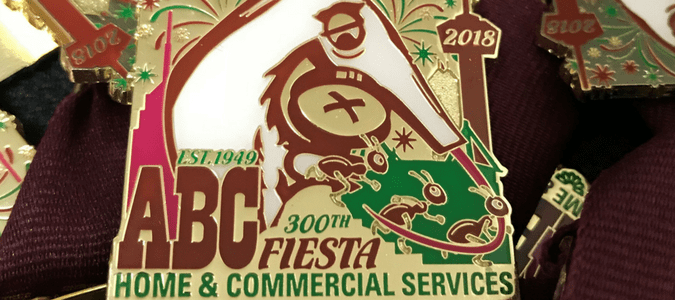
What is Fiesta San Antonio? Fiesta is the city’s biggest annual festival to celebrate the rich culture and history of the Alamo City. More than one-fifth of Fiesta attendees come from outside of San Antonio and around three and a half million people take part in this popular celebration each year. Keep reading to learn more about Fiesta, the history behind the festival, the parades, Rey Feo and more.
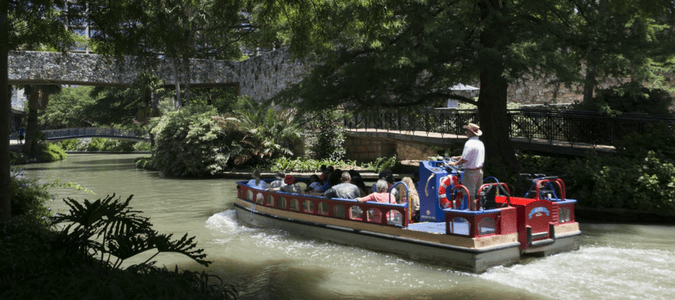
History of Fiesta San Antonio
The history of Fiesta San Antonio dates back to 1891. Previously known and referred to as Fiesta San Jacinto, Fiesta San Antonio began as a flower parade. The initial idea and concept, like most parades and festivals, was meant to be a celebration. According to the Texas State Historical Association, the festival was meant to salute the heroes of the battles of the Alamo and San Jacinto; it was the brainchild of Ellen Maury Slyden, the wife of then Congressman James L. Slayden, and a group of San Antonio women called the Battle of Flowers Association.
With an origin stemming from the Battle of Flowers Association, it’s no surprise that the first parade had an array of floats, horse-drawn carriages and bicycles, too, all dressed and decorated with fresh flowers. Some children dressed as flowers, while others carried bouquets.
By 1895, just four years after the inaugural event, the Battle of Flowers Parade had grown into an elaborate weeklong celebration. It was the same year the first queen was chosen. And as the parade continued to grow, the Battle of Flowers Association remained in charge of coordinating the festivities. According to event organizers, the Fiesta is the only parade in the country to be planned and directed completely by women. Furthermore, it’s the second largest parade of its size nationally, only second to the Tournament of Roses Parade.
By 1945, the San Antonio Conservation Society, an organization that was “formed to encourage the preservation of historic buildings, objects, places, and customs relating to the history of Texas, its natural beauty and all that is admirably distinctive to [the] State,” had become an integral part of Fiesta. The organization led the popular Night in Old San Antonio, an event which spanned four consecutive nights which took place in La Villita. Though the Night in Old San Antonio was originally its own separate festival, it officially became part of the Fiesta in 1948. Intertwined with an array of events like art shows, sports tournaments and tours of local historical areas and military bases, the Night in Old San Antonio remains one of the more popular and successful items on the weeklong festival agenda.
Since its inception, Fiesta has occurred every year, except for two separate occasions: once in 1918 during World War I and for a second time from 1942 through 1945. Despite its prevalence over the years, however, it wasn’t until 1959 that the weeklong celebration became officially known as Fiesta San Antonio. At that point, the San Antonio Chamber of Commerce formed an agency called the Fiesta San Antonio Commission to help oversee the festivities.
In 1980, the event expanded once more when the League of United Latin American Citizens (LULAC) Council No. 2 started a parade of their own: the Paseo del Rey Feo, translated into English as the “ugly king” parade.
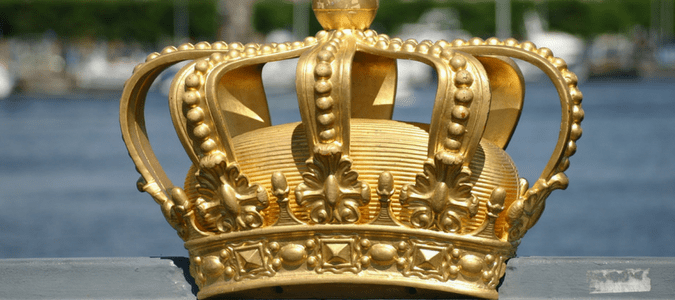
Paseo del Rey Feo
The title of Rey Feo—which, again, translates into “Ugly King” in English—was first bestowed in 1947, but it wasn’t until much later that it joined the official royalty lineup in the parade. According to San Antonio Magazine, the role and title were first coined by the League of United Latin American Citizens (LULAC) to increase Hispanic representation in the Fiesta lineup. The role is said to be modeled after a medieval tradition. The name was created when the common people proclaimed one of their own as “The Ugly King,” or The People’s King, in rebellion towards their sitting king who was rarely seen or interacted with the common folk.
The story of The Ugly King first arrived in the New World in Aguas Calientes, Mexico, during LA Feria de San Marcos for the Festival of St. Mark. According to the Rey Feo Scholarship Foundation, a nonprofit organization that has awarded more than $7 million in scholarships to San Antonio area students to continue their higher education, LULAC Council No. 2 in San Antonio, Texas adopted the Rey Feo tradition as a way to raise money to provide scholarships to underprivileged and deserving San Antonio youth.
The Ugly King was formally invited to join Fiesta in 1980 with its own parade called Paseo Del Rey Feo. The scholarship foundation recognizes the parade as an integral aspect of Fiesta from its inaugural year. Today, the king, along with other Fiesta Royalty, like the LILAC Feria de las Flores Queen, continues to raise scholarship funds and is seen every year riding in all four major Fiesta parades.
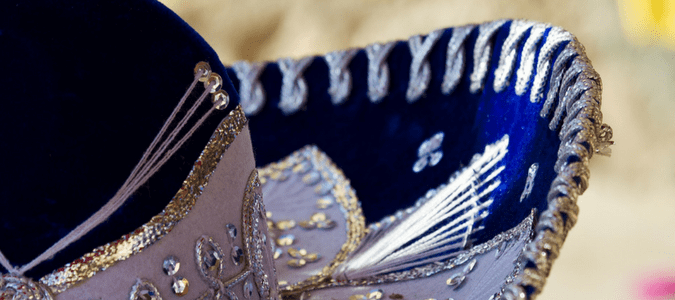
Fiesta Week San Antonio
As we mentioned above, Fiesta actually is more than just a day-long event. The festivities span a full 10 days. Similar to its inception, guests can now choose to attend events like art shows, musical events, sports tournaments, patriotic observances, exhibits and parades too. In total, there are more than 100 events. Each one sponsored by a nonprofit organization.
While the event schedule may change slightly, there are a few long-time traditions during every Fiesta. One of those is St. Mary’s Oyster Bake, a San Antonio tradition that’s been around for more than 90 years. The two-day celebration of food involves more than 100,000 oysters and live music on the St. Mary’s University campus. Another anticipated event is the Women’s Fiesta Soccer Tournament. The invitational tournament that boasts top teams from around the nation is a Fiesta favorite for many attendees. Finally, other Fiesta traditions include the JBSA-Lackland Fiesta Military Parade, the Fiesta Especial 5K Run and Parade, the Pooch Parade and the Cornyation.
Another aspect attendees can expect each year are the lavish costumes, beautiful decorations, bright costumes and of course, an abundance of flowers seen on parade floats, cars and as part of brilliantly-designed costumes. The full list of royalty that is recognized each year during Fiesta includes seven queens and two kings, including:
- King Antonio
- El Rey Feo (The “Ugly King”)
- La Reina de la Feria de las Flores (The “Queen of the Festival of Flowers”)
- The Queen of the Order of the Alamo
- Miss Fiesta San Antonio
- Fiesta Teenage Queen (selected by The Woman’s Club)
- Queen of San Antonio Charro Association
- Queen of Soul
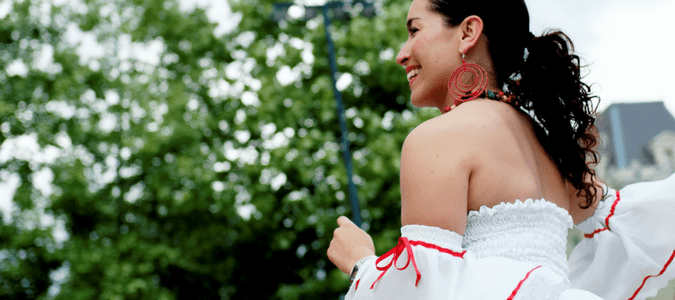
Fiesta Parade San Antonio: Moments And Traditions To Remember
Throughout the years, Fiesta has added new events and included additional parades. In 1970, for example, the Queen of Soul organization worked to increase the involvement and representation of African Americans in Fiesta activities. While the Queen of Soul was added to the Fiesta lineup early on in the event’s history, according to San Antonio Magazine, it wasn’t until the mid-1980s that African American women were invited to ride in the River Parade. For many, the inclusion marked a cultural shift in the parade’s history.
The official Fiesta parades are the:
- Texas Cavaliers River Parade, which includes over 40 floats which drift down the river. The Texas Cavaliers is made up of over 600 community leaders who have worked together to raise over $3 million for local organizations. Admission from the parade will benefit nonprofit organizations working with children.
- Battle of the Flowers Parade, the showcase event of Fiesta and the second-largest daytime parade in the entire country. This parade is noteworthy as the first celebration to be held in the Alamo Plaza.
- Fiesta Pooch Parade, a special event for San Antonio’s canine residents and their owners, featuring a costume contest, presentations and special exhibits along a parade route that is just over two and a half miles.
- Fiesta Flambeau Parade, the largest illuminated event during the annual celebration. Over 750,000 spectators and 1.5 million television viewers enjoy the opportunity to observe parade participants, including local and visiting bands, dance troupes and special equestrian units, as well as the brilliantly-decorated floats.
- King William Fair, the smallest of the parades, but the most unique, highlighting this historical area in San Antonio.
Proceeds from the ticket sales from each parade helps support local causes.
Another addition attendees still see today is the Fiesta medal tradition, which is believed to have begun in 1971 when the king punched holes into his coins, added string and pins and passed out these keepsakes during Fiesta events. Contrary to this belief, though, others say the tradition began in the 1970s when a lieutenant colonel at Fort Sam Houston began passing out military medals. Today, that tradition continues but can present itself in different ways. Today, organizations, businesses and individuals create their own medals, hand them out and trade them with one another.
ABC Commemorates Fiesta With A Medal
ABC Home & Commercial Services has been a proud member of the San Antonio community for decades, providing a variety of home services, including pest control, lawn services, air conditioning and heating and more. That means that every year as April approaches, we gear up for Fiesta and its events along with our neighbors, just as we join residents in celebrating the holiday season. This year, ABC has embraced the Fiesta medal tradition by producing a limited number of special ABC Fiesta medals. We’ll be giving these medals away on a first come, first served basis with new purchases of ABC services. We look forward to celebrating this event with the rest of the San Antonio community this year and in the years to come.
